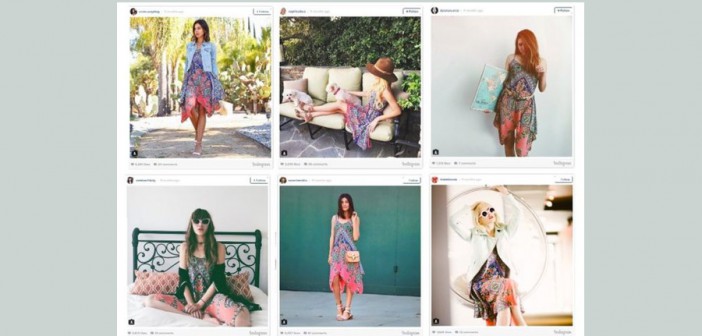The Federal Trade Commission recently held Lord & Taylor responsible for the actions of social influencers hired by an agency, underscoring the need for marketers to tread carefully as such programs become more prevalent.
Brands, consumers and bloggers alike are connecting through partnerships on social media in which influencers share their takes on marketers’ products, with not including a hashtag one way to land in hot water. The FTC’s case against Lord & Taylor is a tale of caution for advertisers, proving it will not back down in holding marketers responsible for cases in which ad campaigns are not made clear on social media.
“According to the FTC, Lord & Taylor is ultimately responsible for the actions of its agencies and/or influencers and Lord & Taylor’s hiring of an agency to administer its influencer program does not relieve it of its responsibilities,” said Allison Fitzpatrick, partner in advertising, marketing & promotions practice group atDavis & Gilbert, New York. “To that point, according to the FTC, Lord & Taylor should have ensured that its agencies had an appropriate program in place to train and monitor influencers and require that its agencies provide it with regular reports confirming such compliance.”
Hashtag #sponsored
Marketers do not need to back away from social media advertising through influencers, publishers and bloggers. One way to address potential problems is to include a simple hashtag.
Posts that are paid for by advertisers must include some sort of an indication that the image, message or blog is an advertisement. Simply including a hashtag such as #ad or #sponsored can be the difference between a lawsuit or not.
The FTC has made it clear that it will be enforcing these guidelines as shown in its case against Lord & Taylor in which the retailer saw significant sales success during March of 2015 after it paid bloggers and the fashion publication Nylon for social media posts showcasing a dress. Images of bloggers modeling their interpretations of the dress went up on social media, which included a tag to Lord & Taylor’s Instagram and the hashtag #designlab but lacked any reference to an ad.

Nylon’s Instagram post advertising the Lord & Taylor dress
While Nylon and the social media influencers created the posts, Lord & Taylor is responsible for the content. The advertiser paying for the content is typically the party at fault if a situation like this occurs.
Transparency is key
While in the eyes of the law it is important for all retailers to stick to these guidelines, for fashion bloggers and social media influencers it is a widely accepted concept by followers that posts such as this are paid for.
However, the severity of the situation lies in the type of product. A social media influencer sharing a post about a weight loss drug without indicating that it is paid for or making false claims, is much more serious than a dress or article of clothing.

Jack in the Box discloses its partnership with Instagram user @mrskmarino
Marketers might be concerned with social media influencer partnerships following the Lord & Taylor case, but the incident just gives an example of what not to do.
“Brands can successfully work with social influencers,” said Kyle-Beth Hilfer, Esq., an advertising and marketing attorney, New York. “It just takes planning.
“Nothing in the law or FTC’s guidelines prohibits social influencer programs,” she said. “These programs can be successfully and legally implemented so long as they focus on transparency and disclosure.”
Advertisers must train their staff to understand the guidelines of social media marketing and have direct and clear communication with influencer partners to ensure no mishaps such as the Lord & Taylor case.
“Best practices include internal training for marketers on the FTC guidelines, enforcement activity, and risk mitigation,” Ms. Hilfer said. “In addition, brands should create clear guidelines for social influencers about their expectations for disclosures and have a monitoring program with teeth, similar to the ones laid out in the FTC’s Machinima and Lord & Taylor cases.
“The best protection for a brand is to show a regulator that it is training its influencers, enforcing disclosure requirements, and parting ways with influencers who are not onboard,” she said.




